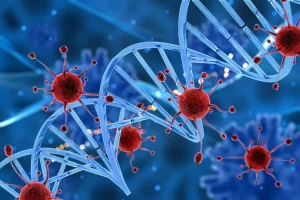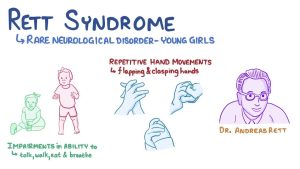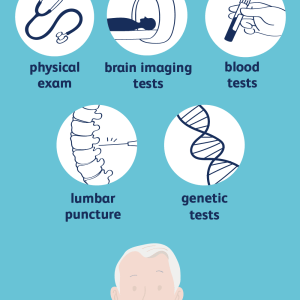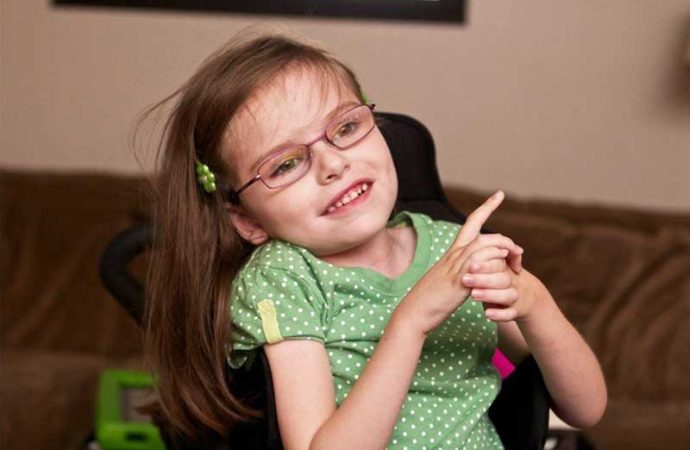Introduction Rett syndrome, a rare genetic condition primarily affecting females, has been a subject of study since Dr. Andreas Rett first described it in 1966. This article delves into the intricate facets of Rett syndrome, exploring its genetic causes, symptoms, diagnosis, and treatment options. Genetic Causes Understanding the roots of Rett syndrome begins with genetic
Introduction
Rett syndrome, a rare genetic condition primarily affecting females, has been a subject of study since Dr. Andreas Rett first described it in 1966. This article delves into the intricate facets of Rett syndrome, exploring its genetic causes, symptoms, diagnosis, and treatment options.
Genetic Causes
Understanding the roots of Rett syndrome begins with genetic variations on the X chromosome, particularly in the MECP2 gene. This gene holds the instructions for producing a protein vital for brain development. Key points include:
- Spontaneous Alterations: In almost all cases, alterations in the MECP2 gene occur spontaneously, with no family history.
- X Chromosome Influence: The gene’s location on the X chromosome explains the higher occurrence in females, who typically have two X chromosomes.

Image by: yandex.com
Symptoms
Rett syndrome manifests in a myriad of symptoms, typically becoming noticeable between 6-18 months of age. These symptoms include:
- Repetitive Hand Movements: Involuntary and repetitive hand movements, like handwashing.
- Loss of Mobility and Function: Decline in mobility or function in the hands.
- Speech Regression: Loss of speech.
- Mobility Challenges: Problems with mobility or walking.
- Hypotonia: Loss of muscle tone.
- Seizures: Occurrence of seizures.
- Scoliosis: Development of scoliosis.
- Breathing Issues: Difficulty in breathing.
- Sleep Problems: Challenges in sleeping.
- Delayed Growth: Slowed growth rate of the head, feet, and hands.

Image by: yandex.com
Diagnosis
Diagnosing Rett syndrome involves careful observation and evaluations. Key steps include:
- Observation of Signs: Doctors observe signs and symptoms during the child’s growth and development.
- Physical and Neurological Evaluations: Conducting evaluations to assess physical and neurological status.
- Genetic Test: Recommending a genetic test to confirm the diagnosis by identifying specific MECP2 gene variations.

Image by: yandex.com
Treatments
While there is no cure for Rett syndrome, a multidisciplinary care team works to enhance the quality of life. Treatment involves:
- Neurologists: Specialized care from neurologists.
- Developmental Pediatricians: Involvement of developmental pediatricians.
- Therapists: Collaboration with physical, occupational, and speech-language therapists.
- FDA-Approved Drug: Introduction of trofinetide (Daybue) – FDA-approved in 2023, aiming to reduce brain swelling, increase protective proteins, and regulate cell activity.
Similar Conditions
Rett syndrome shares similarities with several neurodevelopmental disorders, including:
- CDKL5 Deficiency Disorder: Caused by shortages or malfunctions in the CDKL5 gene.
- FOXG1 Syndrome: Stemming from deficiencies or impairments in the FOXG1 gene.
- Angelman Syndrome: Caused by gene variations affecting the UBE3A gene.
- Autism Spectrum Disorder (ASD): Involving social and communication challenges.
- Cerebral Palsy: Affecting movement, but nonprogressive unlike Rett syndrome.
When to Contact a Doctor
Recognizing subtle signs early is crucial. Caregivers should watch for:
- Developmental Regression: Loss of achieved milestones.
- Hand Skills Loss: Regression in purposeful hand skills.
- Social Withdrawal: Withdrawal from social interactions.
- Slow Growth: Noticeable slowed growth.
Timely consultation with healthcare professionals is essential for effective management.

Image by: yandex.com
Conclusion
Rett syndrome, a genetic neurodevelopmental condition, presents complex challenges. By exploring its genetic causes, diverse symptoms, diagnosis procedures, and available treatments, we aim to enhance awareness and underscore the significance of early intervention for individuals with Rett syndrome.

















Leave a Comment
Your email address will not be published. Required fields are marked with *